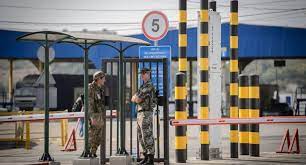Date of publication: 1 March 2018
Oleksiy Gorbatyuk, Lawyer
Source: European Pravda
On February 1 Ukraine has acceded to the Regional Convention on Pan-Euro-Mediterranean Preferential Rules of Origin (Pan-Euro-Med).
The Convention provides for the application of identical provisions regarding the origin of goods that are exported/imported between the Contracting Parties to the Convention, provided that such countries have entered into the free trade agreements. The Convention also provides for the application of the diagonal cumulation rules which, in turn, enables the Contracting Parties to use each other’s raw materials and components, – not only domestic ones, – in their production processes, yet preserving the same preferential terms of trade (imports with reduced or zero rate customs duties).
What exactly has changed? Previously, when exporting goods with the preferential origin status to countries, with which Ukraine has entered into the FTAs, the bilateral cumulation rules applied.
That is, the goods could have been exported under the preferential terms of trade provided that the raw materials and/or components of the said goods originated from the countries between which the bilateral FTA was signed.
Now, after Ukraine’s accession to the Convention, in order to preserve preferential terms of trade Ukrainian entrepreneurs have an opportunity to use in their production cycle not only domestic raw materials and/or those originating from the country the final goods will be exported to, but also from other Contracting Parties to the Convention (42 countries have already acceded to the Convention).
How does it look like in practice?
The citrus fruits with preferential status are imported from Spain to Ukraine (EU-Ukraine FTA). In Ukraine they are used to produce fruit juices. Later on these juices are exported to Montenegro (Montenegro-Ukraine FTA).
These juices will retain their preferential status and will be exported at a zero rate customs duty, yet having the status of “originating in Ukraine”.
At the same time, Ukrainian raw materials and components may also be used to produce goods in other Contracting Parties to the Convention for their further export as components of finished goods.
Ukraine’s accession to the Convention will undoubtedly enhance the opportunities for preferential export of domestic goods to the particularly promising foreign markets and will attract Ukrainian producers to European and global value chains of goods.
First of all, the said Convention will offer access to new markets (in states being the Contracting Parties to the Convention) for Ukrainian producers of goods, which use raw materials and components originating in different Contracting Parties to the Convention in their production process.
In addition, the demand for Ukrainian raw materials and components will increase. And it is Ukrainian metallurgy and consumer goods industry that will stand to gain.
Not less important is how can Ukrainian exporters take advantage of the Convention?
The only changes in the export procedure provided for in the Convention will affect the certification of goods to be exported to the Contracting Parties. Thus, in order to certify the origin of goods, produced from raw materials or components imported under the Convention, as well as for their further export, the EUR-MED certificate will be required, which will be issued subject to the diagonal cumulation rules.
Pursuant to the provisions of the Convention, this certificate, just like the EUR.1 certificate, will be issued by the customs authorities. To get the said certificate the exporter or its authorized representative will need to file an application and a filled in certificate form, the samples of which are given in the appendices to the Convention.
Unlike the EUR.1 certificate, column 7 of the EUR-MED certificate (“Remarks”) shall be filled in. Where the goods received the preferential origin status on the basis of cumulation, the column 7 shall contain the list of countries, from which the raw materials and/or components were supplied for the purpose of their use in production (“Cumulation applied with…”).
And where the goods having the preferential origin status were fully produced in Ukraine, or where the materials used in the production, and having no preferential origin status, were sufficiently worked or processed, column 7 shall indicate that the cumulation was not applied (“No cumulation applied”).
There are reasons to believe that Ukraine’s accession to the Pan-Euro-Med Convention will provide our country with opportunity to be involved into the European and global value chains, as well as increase the volume of direct investments in our country.
The next important step on the part of Ukraine will be the implementation of the Convention and, in the future, the signing of new FTAs with the Contracting Parties to this agreement.
Now Ukrainian economy anticipates an increase in the volume of exports.
